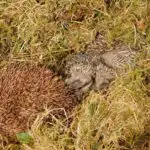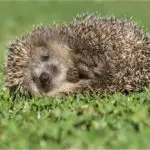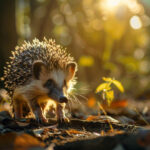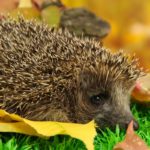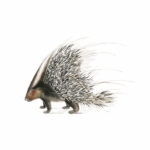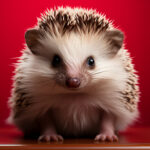It is easy to spot a hedgehog in the wild, just see if they have the prominent large shell of spikes on their back called quills.
These spikes are only shared by a few other animals such as porcupines, however along with the hedgehog’s incredible sense of smell and sight, this exterior makes them more than prepared for any potential predators.
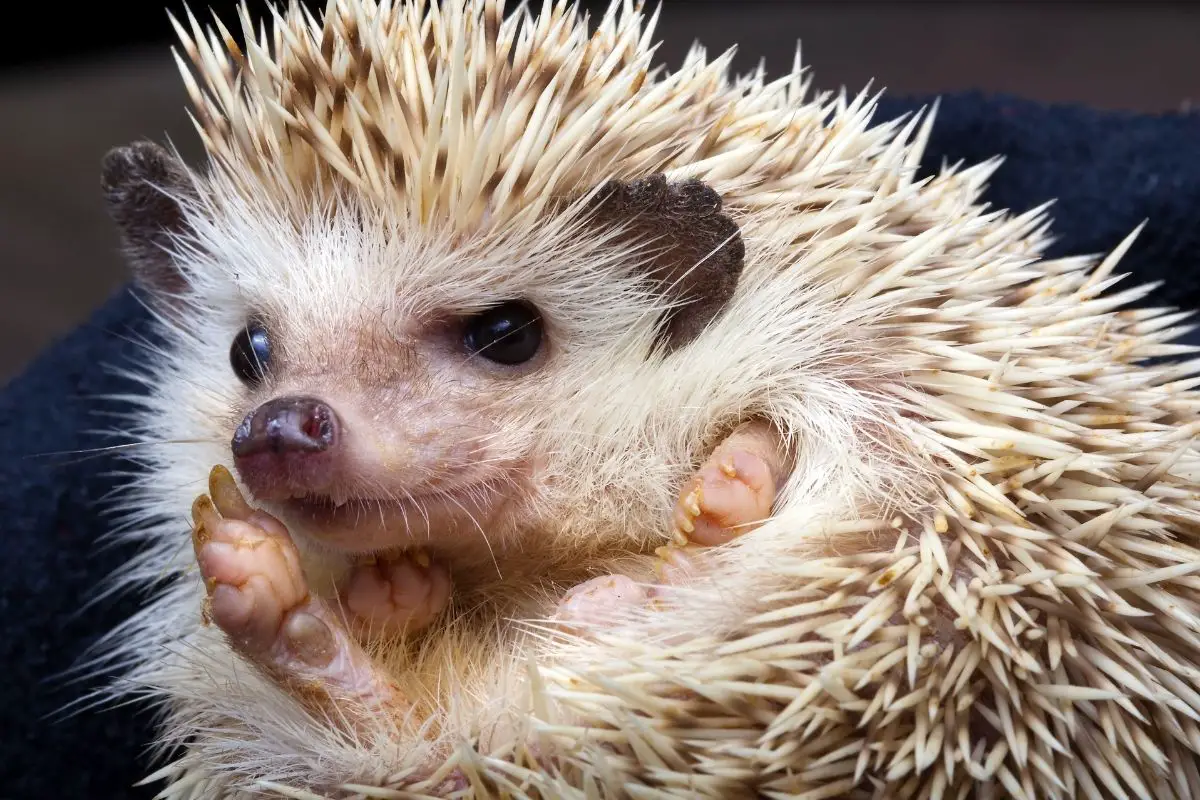
While it is well known that the quills are used as a form of defense, a common query that is less known is whether they can actually shoot their quills as projectiles.
After all, their close friend the porcupine had been believed for decades to be able to shoot their quills at predators which is commonly seen on cartoons and animated films, so surely the hedgehog can do it too right?
We have listed everything you need to know about hedgehogs, their quills and whether these walking pincushions really can use them as offensive tools against predators, or whether this is a myth that has stood the test of time.
What Are Quills?
Quills, also known as spines, are the hardened spikes on each hedgehog’s back made of keratin, the same material our hair and fingernails are made of.
Each hedgehog has from 3000 to 5000 quills and are even born with them, though they are very soft and flexible as babies and are covered by puffy fluid to avoid hurting the mother during childbirth.
About a month into their life along with their eyes and ears opening, the hedgehog’s quills will become darker and denser, eventually leading to the stiffened spikes they gain from then on.
Quills fit a hedgehog’s personality very well, being very territorial but having no other physical prowess, they act as a perfect defense mechanism for an animal who would struggle to go toe to toe with most animals physically.
Hedgehogs also go through a ‘quilling’ process from time to time when their quills shed and they replace them with new, firmer ones.
Between the ages of six weeks and ten months, a hedgehog can shed most of its quills several times, however after this point they usually stop with only the odd quill falling out here and there.
Quilling is often very painful and can easily put a hedgehog in an irritable mood for the day, so make sure to give them their own space when this happens.
Can Hedgehogs Shoot Their Quills?
While it would make for a great scene ripped straight out of a cartoon, unfortunately hedgehogs cannot shoot their quills, similar to their porcupine friends, this is largely a myth that has carried through to create some scepticism.
It can be easy when looking at a fierce predator to think they could lunge or attack at any moment, spiders for example look as if they’re always ready to pounce given their small but terrifying presence, and this could easily be the case when looking at a hedgehogs mountain of spikes, however there is no need to fear as your prickly friend would never be able to launch them at you, or any predators.
When Will They Use Their Quills?
Rather than firing them as offensive arrows, hedgehog quills are used more defensively as they will use their back and tummy muscles to form a criss cross pattern with their quills, whether they are awake or asleep, to fend away animals when resting or when it is in immediate danger.
This means rather than engaging in any physical fights, a hedgehog will retreat into a ball with most predators not seeing it to be worth the effort, even lions have been said to turn away from a curled up hedgehog.
Some myths state hedgehogs can use them in more adventurous ways like carrying fruit on their backs as was detailed in Roman and Chinese folklore, or by curling up and rolling into foes like a spiky wrecking ball as seen in Alice in Wonderland.
Unfortunately, these are also both false however, despite how easy it would be for a hedgehog to pluck a few apples to take home if they could.
How Dangerous Are Their Quills?
While they can’t be fired from their back, a hedgehog’s quills can still pack a nasty sting, however if you do accidentally get one jammed in you, it is not a case of major concern as they are not as dangerous as say a porcupines quills which are sharper and include barbs.
While not the deadliest, the sheer prickliness of a hedgehog means most predators will still stay away to avoid being stung 3000 times over.
For an owner, there are a few pointers to keep in mind to avoid ever being ‘quilled’.
Firstly is to try and get the hog used to being around you and other humans by spending a lot of much-needed bonding time with them.
This could be as simple as picking them up every now and again to talking to them while you’re in the bathtub.
This works best when spending time with a hedgehog from birth, and it will let them know they are welcome and safe in your home, and will make them far less defensive and less likely to flare up their quills.
A hedgehog’s quills will also lie flat and only be mildly pokey when they are in a relaxed state, feeling similar to a tub of straws or a hairbrush when touched.
When picking up a hedgehog, also try to scoop it up slowly and try not to make sudden movements to avoid being stung.
It can be easy to pick up a hedgehog by wrapping our arms around it or placing one hand carefully over the quills, however these are not the most optimal methods.
While they will prick, even tensed hedgehog quills are not sharp enough to break the skin or draw blood, but it’s better to avoid them if possible.
Conclusion
While hedgehogs cannot fire their spiky quills from their back, make sure to still be careful when interacting with a hedgehog to avoid receiving a spiky treat.

